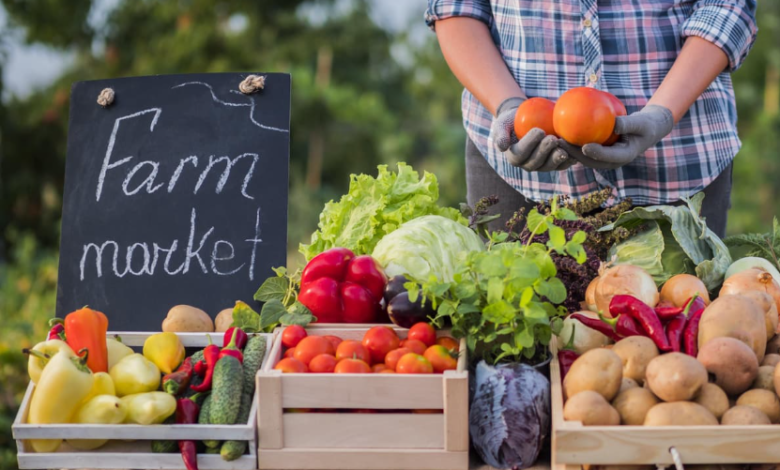Farm Near By Me Guide to Finding Local Fresh Produce and Activities

Finding a farm near by me offers a great opportunity to connect with nature, enjoy fresh produce, and learn about where food comes from. Many farms in local areas provide hands-on experiences like picking fruits, feeding animals, and exploring rural landscapes. These visits can be both educational and relaxing for people of all ages.
A nearby farm often combines family-friendly activities with the chance to buy fresh, local products directly from the source. Farms around cities like Markham or the Greater Toronto Area focus on organic and sustainable practices, making them ideal for those interested in healthy, natural foods. Visiting a farm also supports local agriculture and helps consumers understand farming traditions.
Whether someone is looking for seasonal events, petting zoos, or fresh farm-to-table options, there are farms nearby that offer a variety of experiences. This makes it easy to plan a day trip that brings fresh air and valuable insights straight from the farm.
Finding a Farm Near You
Locating a farm close to home involves using dedicated resources that list farms, orchards, and markets in specific regions. Understanding where to look and how to contact these farms directly makes the process efficient and reliable.
Search Tools and Directories
Several online directories and search tools focus on connecting consumers with local farms. These platforms allow users to search by location, crop, or farm name. Many offer interactive maps to visualize farm locations relative to the searcher’s position.
Some tools specialize in “u-pick” options, highlighting farms where customers can harvest fruits and vegetables themselves. Filtering by product and region helps narrow down choices quickly. These resources often update seasonally to reflect current availability, making them practical for planning visits.
Location-Based Recommendations
Using GPS coordinates or postal codes helps generate tailored lists of nearby farms. Some websites accept nearby GPS points instead of exact addresses, respecting farm privacy while still directing customers to local sources.
Location-based services often feature farms that offer pickups or drop locations, which simplifies food collection. These options are ideal for those seeking convenience without traveling deep into rural areas.
Contacting Local Farms
Once a potential farm is identified, reaching out directly is essential for confirming hours, products, and availability. Many farms provide phone numbers, emails, or contact forms on their listings.
Direct communication also allows clarification about pickup points, payment methods, and any special events like farm tours. Building rapport with local farm owners can lead to better customer experiences and access to fresh, seasonal produce.
See also: Financing for Small Businesses Explained: Key Options and Strategies for Success
What to Expect from Local Farms
Local farms provide a variety of fresh products, engage in sustainable practices, and often host events that connect the community. Visitors can anticipate direct access to seasonal produce, animal products, and unique experiences tied to the farming lifestyle.
Products and Services Offered
Local farms typically offer fresh fruits and vegetables, such as heirloom tomatoes, berries, and leafy greens. Many farms also sell eggs, honey, dairy, and meat directly to consumers. Some provide specialty items like lavender, herbs, or homemade preserves.
In addition to produce, farms may offer U-pick opportunities allowing visitors to harvest their own fruits or vegetables. Others might operate farm stands or markets on-site or supply Community Supported Agriculture (CSA) boxes for regular home delivery.
Services like farm tours, workshops on gardening or animal care, and custom orders for bulk or specialty products are becoming more common, providing both convenience and education.
Sustainable Farming Practices
Local farms frequently use methods that prioritize long-term environmental health. Common practices include organic growing techniques, crop rotation, minimal pesticide use, and soil conservation.
Many farms aim to reduce their carbon footprint by limiting transportation distances, often selling directly to customers or local markets. Animals are commonly raised outdoors with attention to humane care and natural diets.
Some farms integrate permaculture principles or focus on biodiversity to maintain ecosystem balance. This approach supports cleaner soil, healthier plants, and stronger resilience against pests and diseases.
Community Events
Many local farms host seasonal events to engage visitors beyond just purchasing food. These can include harvest festivals, crop tours, and pick-your-own days to attract families and individuals interested in farm life.
Workshops on topics like beekeeping, preserving produce, and sustainable gardening help build knowledge within the community. Farm stands often serve as social hubs for neighbors to meet and share local food experiences.
Roadside stands and markets operated by farms provide opportunities to interact with farmers directly. These events strengthen community ties and promote awareness of where and how food is grown.





